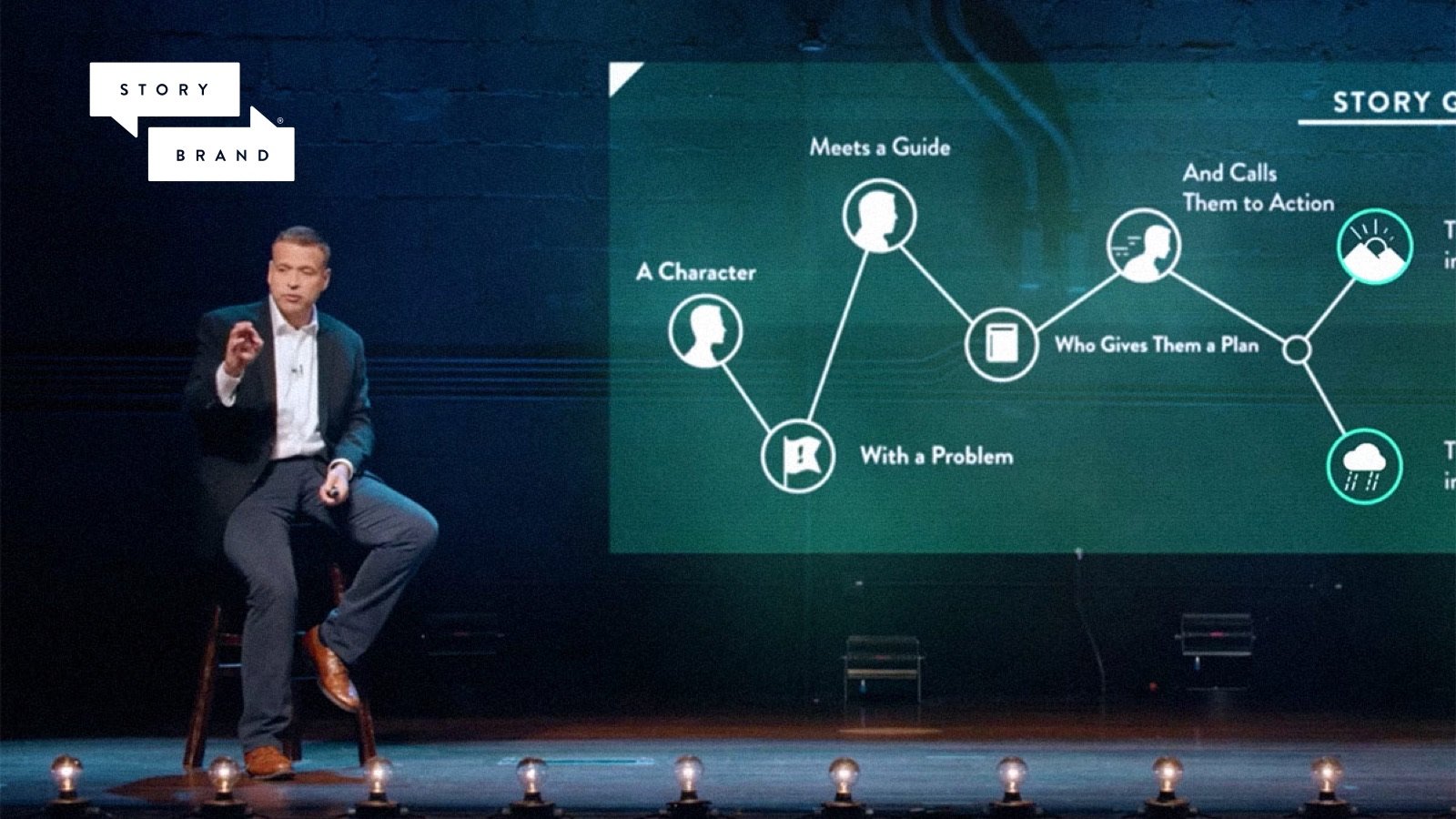How to clarify your message using StoryBrand
How to clarify your message using StoryBrand in 2024 — so that customers will listen.
The role of marketing is to communicate to customers why they need to buy your products. To be effective, your marketing message needs to be clear and compelling.
But most businesses don’t do this. Instead, they try to use cute or clever messaging, which leaves customers confused about what it is they offer and why it should matter to them.
To create a clear and compelling message, you need to communicate the problem your customer is experiencing, how your product solves that problem and what the positive results will be for the customer when they buy your product. So what’s the best way to present this information? The answer is: as a story.
Understanding the StoryBrand Framework
StoryBrand is a world-renown messaging framework that helps businesses clarify their message by using the timeless elements of storytelling.
Created by Donald Miller, author of the best-selling book "Building a StoryBrand", this framework is grounded in the idea that our brains are wired to understand and engage information through stories. We all do this subconsciously as a survival mechanism to filter between helpful information and noise.
Consumers are flooded with marketing messages everyday. Most messages fail to get our attention, even for a few seconds, because they don’t speak in a way our brains can quickly understand.
When businesses use a narrative structure to create marketing messages, they can cut through the marketing noise and get customers attention to take them on a journey, by which the customer plays the ‘hero’ in the story and the business plays the ‘guide’.
Let’s explore how you can use the StoryBrand framework to clarify your message in 2024:
Why use StoryBrand to clarify your message?
Here are just a few reasons why businesses should use the StoryBrand Messaging framework:
• Reduces confusion
StoryBrand framework help businesses eliminate junk words that confuse customers and focus on the most important information that their customers need to know. By following the framework, businesses can create clear and compelling messaging that resonates with their target audience.
• Separates you from competitors
StoryBrand helps businesses stand out in a crowded marketplace. Most businesses sell based on comparable features and benefits, whereas using story takes customers past the rational process and into the emotional — where we make most of our purchase decisions are made.
Using story can set your business apart because “People don’t buy the best products; they buy the products they can understand the fastest.” — Donald Miller. Customers are buying the product they understand the fastest, and the best way to help customers understand something is to tell a short story.
• Creates consistency in messaging
The StoryBrand framework provides a consistent formula for creating any type of message: website wireframe, sales pitch, speech, email campaign, social media post.
Customers need to hear the same message again and again to remember it, at least 7 times, but newer studies suggest 14 or more times!
Implementing StoryBrand
The first step to clarify your message using the StoryBrand is to understand how the framework works.
The best way to do that is to read the book ‘Building A Story Brand’ or take the StoryBrand Messaging Course.
There are 7 key parts to every story. These 7 parts make up the StoryBrand formula.
Here is a quick summary of each part:
A Character: The customer is the hero in the story, not your brand. This part focuses on understanding the customer’s desires and positioning them as the central character in the story.
Has a Problem: Identify the challenges your customers face. This includes external, internal, and philosophical conflicts they are trying to resolve.
And Meets a Guide: Your brand is the guide. This part involves presenting your brand as an empathetic and authoritative guide in the customer’s story. This also positions your products as the solution to the hero’s problem.
Who Gives Them a Plan: Offer a simple, step-by-step plan for the customers to follow. This reduces their fear of making a purchase.
That Calls Them to Action: Customers don't take action unless they are challenged to do so. This part involves clear and compelling call to action.
That Helps Them Avoid Failure: Explain the negative consequences of not doing business with you. This creates a sense of urgency and stakes in the story.
And Ends in a Success: Share the positive results of doing business with you. This defines what success looks like and helps customers envision a happy ending to their story.
Each part of the framework builds on the previous one, creating a cohesive narrative that makes your marketing message clear and engaging for your audience.
Once you understand these 7 parts, you can create what’s called a Brand Script. Using this template, you can quickly create marketing messages using the 7 parts of a story.
A Certified Guide or Coach can provide you with this template. Or you can access the digital version through BusinessMadeSimple.com platform.
The StoryBrand framework makes it so easy to create marketing assets, whether it’s designing a landing page or crafting an email campaign. Use this tool again and again across your business to clarify your message.
Businesses that clarify their message win in the marketplace
If you want to clarify your message in 2024 and get better results from your marketing, consider using the StoryBrand framework to create clear and compelling narratives that get customers attention and motivate them take action.
At Leader Guide, we’ve helped dozens of businesses adopt this framework and get phenomenal results with it.
Video Source: Business Made Simple
You can take the StoryBrand Messaging Course with a subscription to BusinessMadeSimple.com — US$275/year. (You’ll get access to other courses with that).





